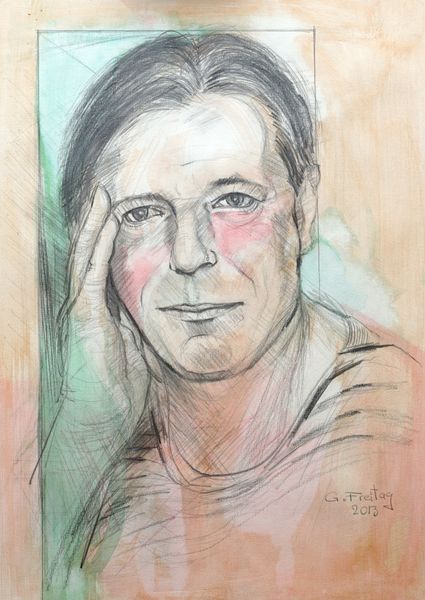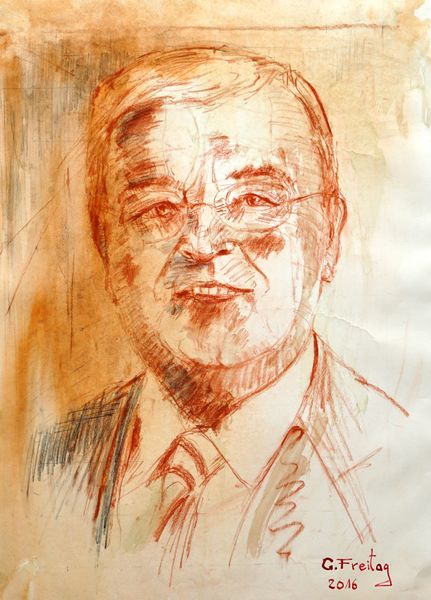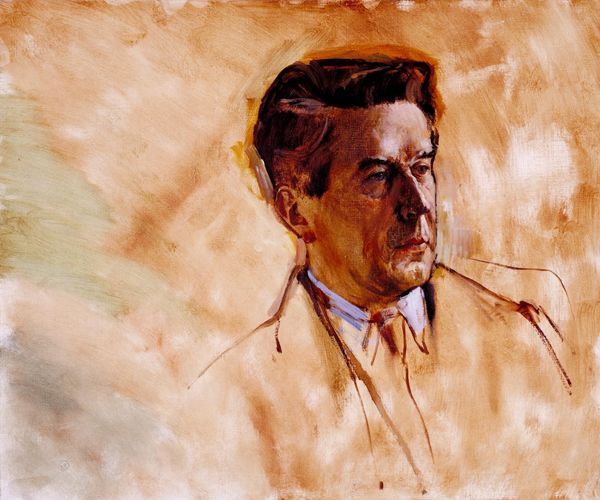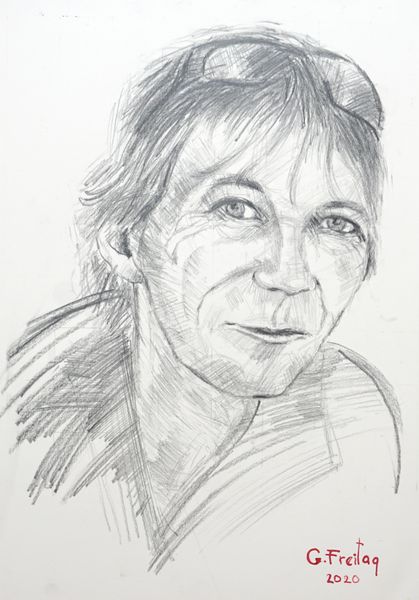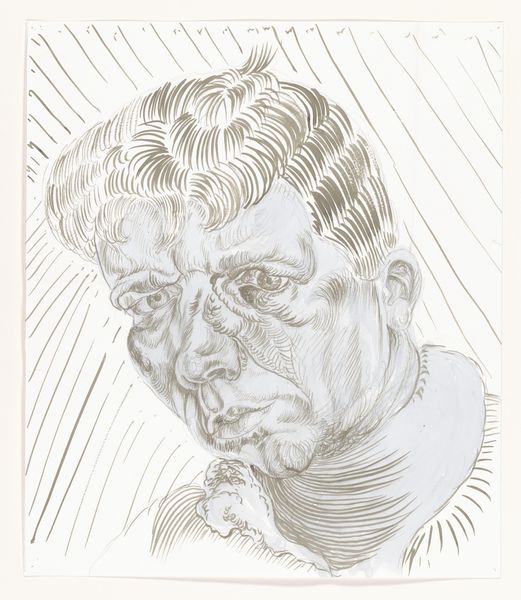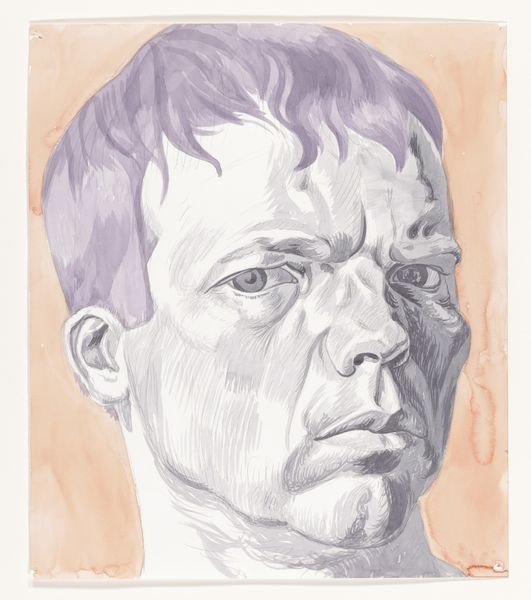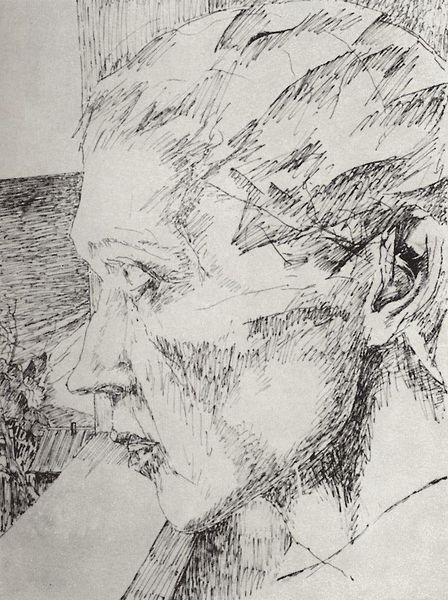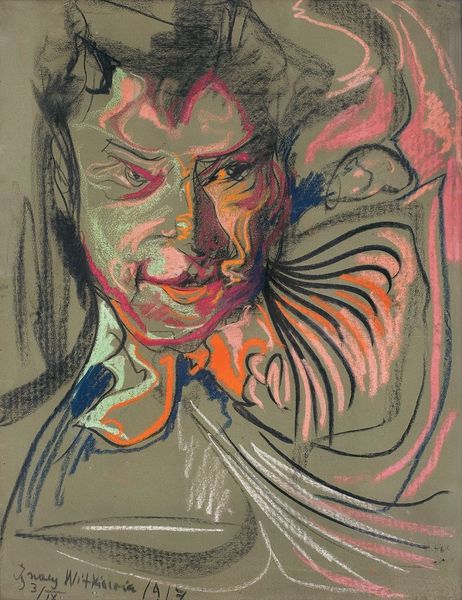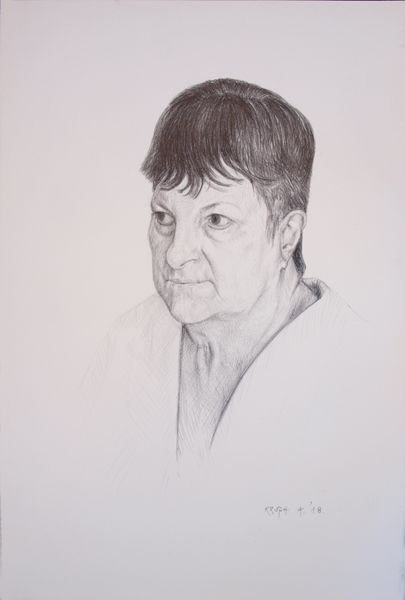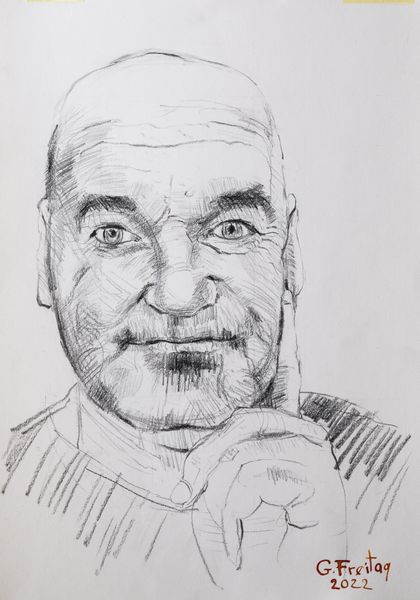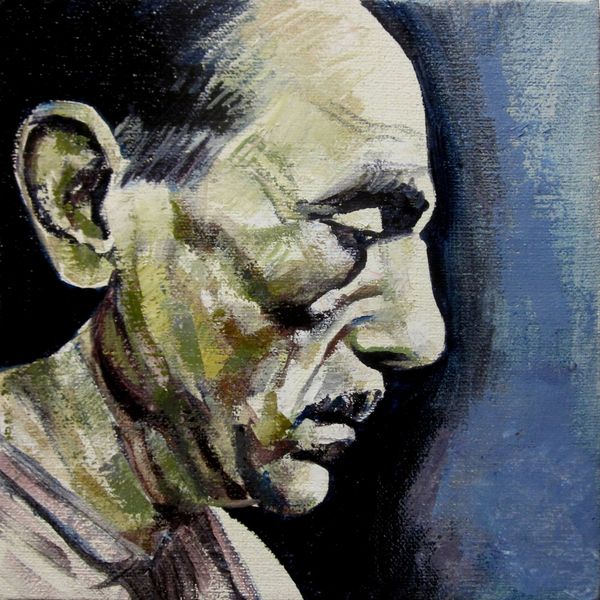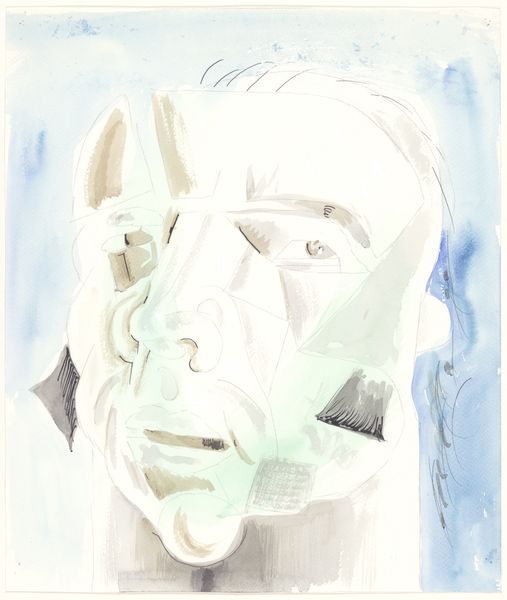
watercolor
#
portrait
#
figuration
#
watercolor
#
watercolor
Copyright: Modern Artists: Artvee
Curator: Robert Peak's 1983 watercolor, titled *Jim Thorpe*, immediately strikes me as an important example of how portraiture can serve as a vital intervention in reshaping historical narratives. What are your initial thoughts? Editor: Well, my eye is drawn to the fluidity of the watercolor itself. Look at how Peak handles the pigment, the way it bleeds and merges, especially around the edges of the face. It's almost as if Thorpe is emerging from the very earth he so triumphantly traversed. Curator: Precisely. Peak is consciously positioning Thorpe, an Indigenous athlete stripped of his Olympic medals due to contested amateurism charges, within a specific cultural and political framework. The softness of the medium doesn’t diminish his power; it emphasizes the injustices he faced. How do we interpret the choice of watercolor? Is it a challenge to the conventions typically associated with monuments and memorials to celebrated historical figures? Editor: Perhaps. The use of watercolor points toward the accessibility and speed of its manufacture compared to oil paints; that might explain some of its use here, if it were deployed primarily for rapid distribution in readily accessible prints. The drips and runs acknowledge gravity, the earth, reminding us of Thorpe's athletic presence, and also his humanity and its fragility. Curator: The choice speaks volumes. Peak subtly references the historical complexities and injustices that Thorpe faced. His legacy needs to be understood through an intersectional lens, acknowledging his Indigenous identity, athletic accomplishments, and the socio-political landscape that sought to diminish him. The blurring of boundaries within the work feels aligned with a challenge to these marginalizing practices. Editor: It's a fascinating choice of medium to honor such a powerhouse. Look how he defines Thorpe's strong brow. But yes, the wash of colors does have a potent feel to it. This seems less a celebratory image than a solemn reflection on the costs that athletic endeavor brought, back in that historical moment. Curator: Considering Peak's broader artistic project of honoring figures who challenged norms and resisted oppression, the materiality adds another layer of meaning. It encourages a critical dialogue about how we remember and celebrate historical figures. Editor: I see this as a great illustration that, like athletic effort itself, there's always an intricate and demanding work process sitting at the root of that triumphant "feat," and the material result may offer a subtle way to recognize and acknowledge that complexity. Curator: It’s interesting how the deliberate application of this “simple” medium results in such a powerful call for justice and reevaluation of collective memory. Editor: Precisely. Thinking about the material makes these reflections possible.
Comments
No comments
Be the first to comment and join the conversation on the ultimate creative platform.
